Advertisements
Advertisements
प्रश्न
The following figure is parallelogram. Find the degree values of the unknown x, y, z.
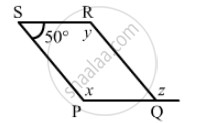
उत्तर
\[\text{ Opposite angles of a parallelogram are same } . \]
\[ \therefore x = y \text{ and } \angle RQP = 100°\]
\[\angle PSR + \angle SRQ = 180°\]
\[y + 50°= 180°\]
\[x = 180°- 50°\]
\[x = 130°\]
\[ \therefore x = 130°, y = 130° \]
\[ \text{ Since y and z are alternate angles, z }= 130° . \]
APPEARS IN
संबंधित प्रश्न
The following figure is parallelogram. Find the degree values of the unknown x, y, z.
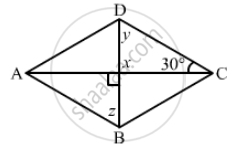
Can the following figure be parallelogram. Justify your answer.
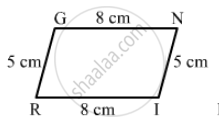
In the following figure RISK and CLUE are parallelograms. Find the measure of x.
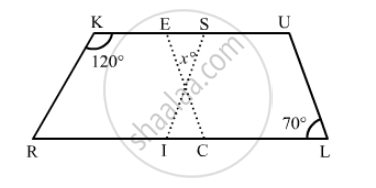
Diagonals of parallelogram ABCD intersect at O as shown in the following fegure. XY contains O, and X, Y are points on opposite sides of the parallelogram. Give reasons for each of the following:
(i) OB = OD
(ii) ∠OBY = ∠ODX
(iii) ∠BOY = ∠DOX
(iv) ∆BOY ≅ ∆DOX
Now, state if XY is bisected at O.
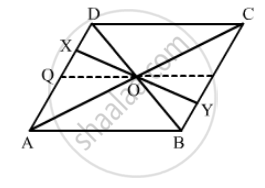
Which of the following statement is true for a rhombus?
It can be a square.
Fill in the blank, in the following, so as to make the statement true:
A rhombus is a parallelogram in which ......
The diagonals of a quadrilateral are perpendicular to each other. Is such a quadrilateral always a rhombus? If your answer is 'No', draw a figure to justify your answer.
In a rhombus diagonals intersect at ______ angles.
Diagonals of a quadrilateral are perpendicular to each other. Is such a quadrilateral always a rhombus? Give a figure to justify your answer.
Construct a rhombus whose side is 5 cm and one angle is of 60°.
